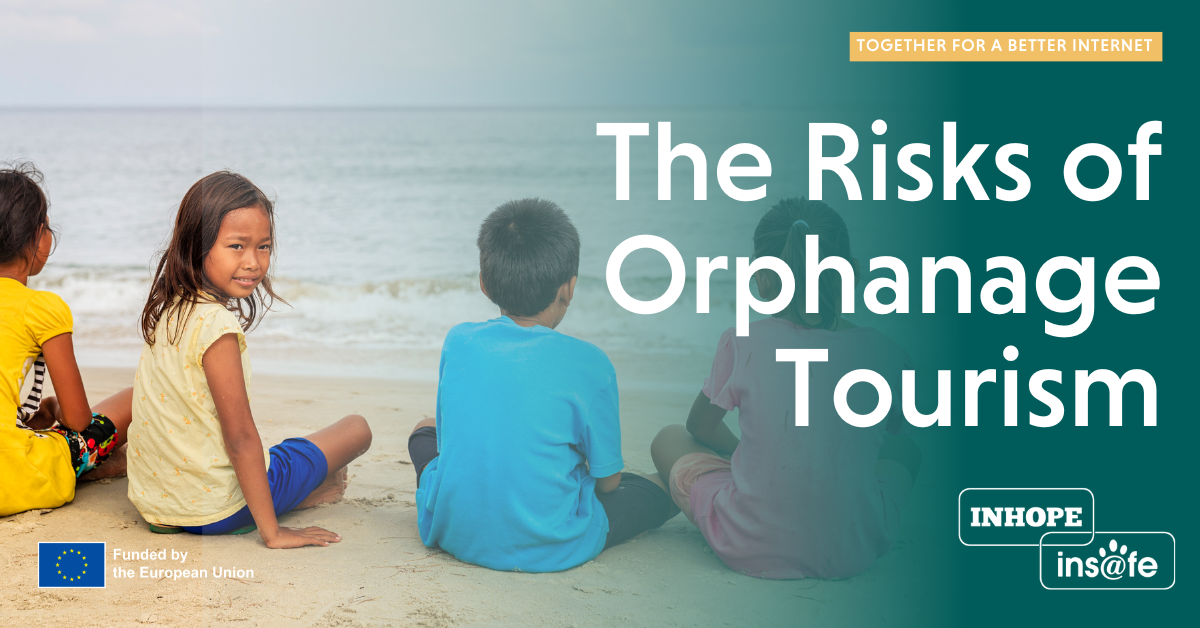Article
Educational Articles
Events & Campaigns
Beyond Good Intentions: The Risks of Orphanage Tourism
Orphanage tourism, a subset of voluntourism, has grown in popularity in recent years. Many well-intentioned travellers are drawn to the idea of helping vulnerable children in developing countries. However, it is important to recognise that there are associated risks with this practice that many people are not aware of.
Although their motives are praiseworthy, the potential harm inflicted upon children is higher than people think, leading reputable NGOs to discourage the continuation of this type of volunteering. According to ECPAT International, approximately 8 million children are living in institutions worldwide and the number of orphanages in popular tourist destinations has increased by 65% between 2000 and 2010.
Affected countries
Certain countries have become hotspots for orphanage tourism due to factors such as poverty, weak regulation, and high demand from well-intentioned tourists. Some of the most affected countries include Cambodia, India, Nepal, Thailand, Peru, Costa Rica and parts of Africa. These regions attract a significant number of visitors, making them susceptible to the risks of child exploitation.
The real dangers
Many NGOs such as UNICEF, ECPAT International, Save the Children, Terre des Hommes and more, have extensively researched and documented the dangers associated with orphanage tourism. Children in these institutions may face:
- Institutionalisation: The practice of keeping children in orphanages, only to attract volunteers and donations, making this a never-ending cycle. It could damage their emotional and psychological development, as they lack the love, care, and stability of a family environment.
- Psychological Harm: Children in orphanages often face neglect, emotional trauma, and a lack of individualised care. Frequent interactions with volunteers, who form temporary attachments, can lead to emotional instability and attachment disorders.
- Disruption of Education: The constant flux of tourists disrupts the educational routine of children in orphanages. The focus shifts from providing quality education to entertaining and accommodating visitors.
- Sexual abuse and exploitation: Bad actors may use images or videos of children to attract visitors and donations. Pictures of malnourished children can be circulated online, enticing tourists to visit and support orphanages, unknowingly contributing to perpetual abuse. These establishments also may subject children to abusive situations and the production and/or distribution of CSAM for financial gain. The presence of unvetted volunteers and visitors increases the risk of access to vulnerable children, enabling opportunistic individuals to exploit them. In some cases, there are the visitors themselves that coerce children to perform explicit acts or capture and disseminate explicit images and videos without their consent.
- Trafficking: The increasing demand for volunteer opportunities has led to the emergence of fraudulent institutions that exploit children for profit. Some children are separated from their parents or trafficked to meet the demand for vulnerable beneficiaries. For instance, UNICEF states that even though the number of orphans has fallen in Cambodia, the number of orphanages has doubled between 2009-2014.
Collaborative efforts to protect children in orphanages
Safeguarding children in the context of orphanage tourism requires strengthened measures and bigger efforts from governments, NGOs, tourism agencies, local communities and tourists.
- Governments should enforce strict regulations to prevent the spread of exploitative orphanages. Effective licensing and regular monitoring can help identify and shut down establishments engaging in exploitation.
- Raising awareness among tourists about the risk associated with orphanage tourism is crucial. Travel agencies, airlines and online platforms should provide accurate information about responsible travel practices, including avoiding visits to orphanages.
- Supporting community-based care: Rather than investing in orphanages, efforts should focus on empowering local communities to provide care for vulnerable children within their own families or in small-scale residential settings. This approach ensures the child’s best interest, reduces the risk of exploitation and creates sustainable solutions.
What can we all do?
To combat orphanage tourism effectively, it is vital to report any suspicious activities. If you suspect a case of child abuse or exploitation, contact the local police or child protection organisations, providing them with all the necessary details to investigate the case. Whereas, if you encounter online harmful material, it is important to report it immediately to the local hotline. To find the local hotline of a country you can visit INHOPE.
Safer Internet Day would not be possible without the support of the European Union. Funding is provided by the Digital Europe Programme (DIGITAL). Learn more about the European Commission’s new European strategy for a better internet for kids (BIK+) on the EC website.

Safeguarding children in the context of orphanage tourism requires strengthened measures and bigger efforts from governments, NGOs, tourism agencies, local communities and tourists.
'